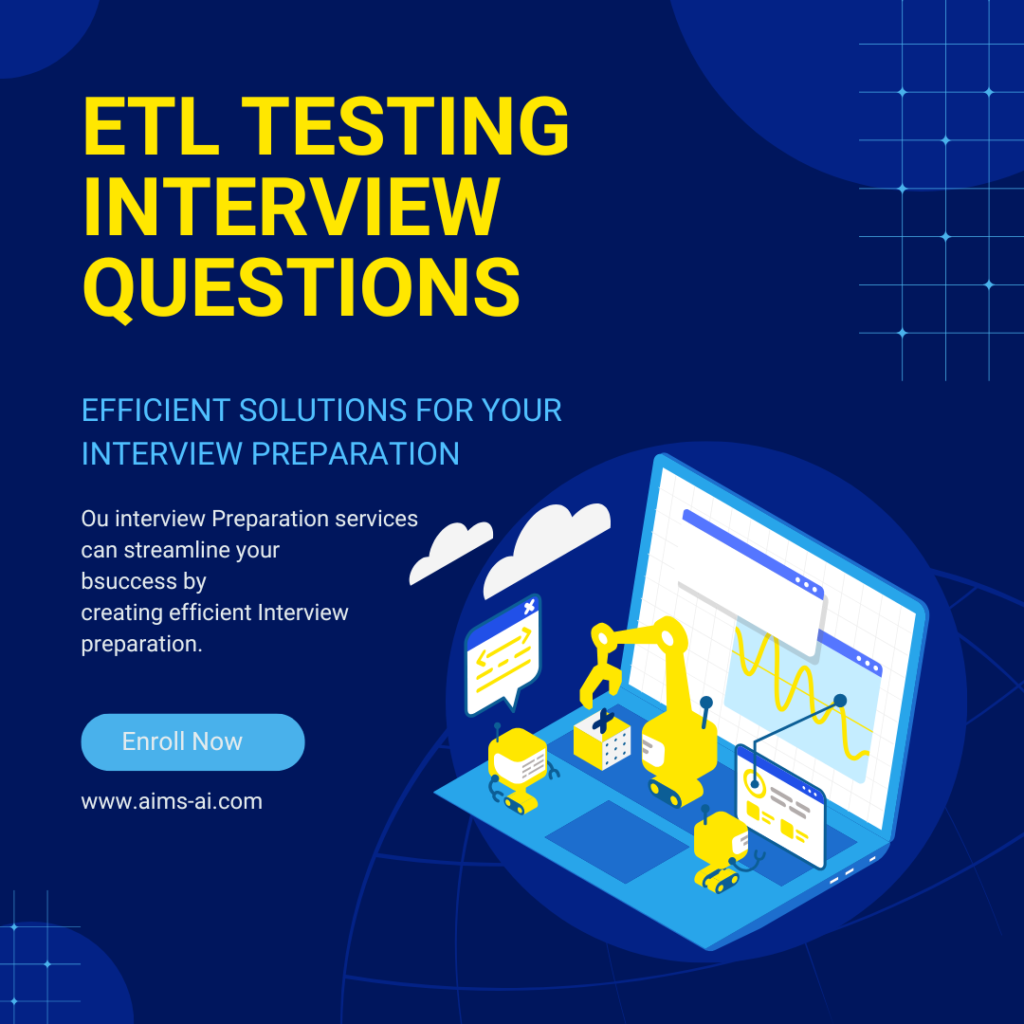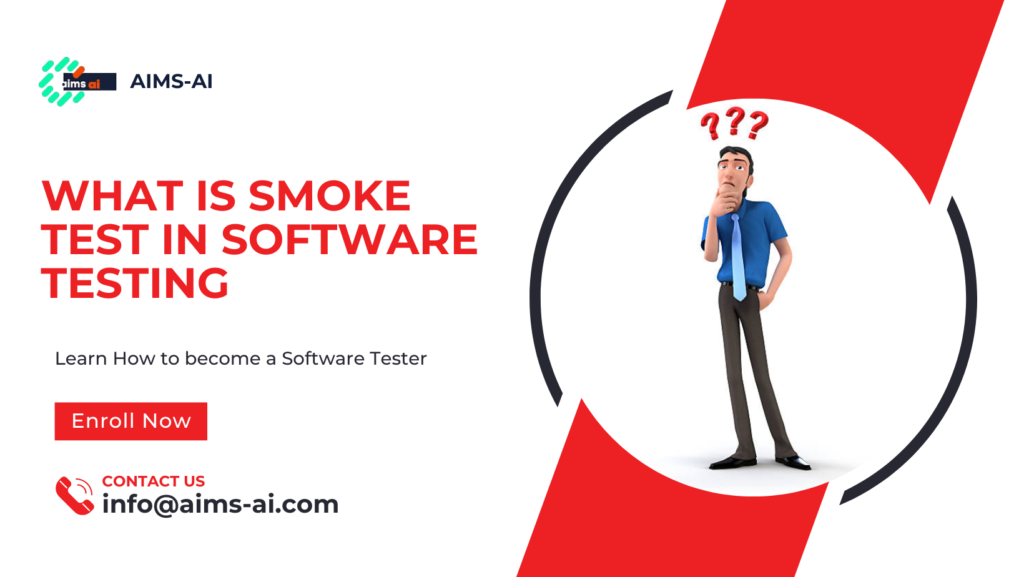ETL Testing Interview Questions for Testers: A Comprehensive Guide
In today’s data-driven world, ETL (Extract, Transform, Load) testing plays a pivotal role in ensuring the accuracy and reliability of data pipelines. For testers aiming to excel in ETL testing roles, preparing for interviews with the right set of questions is crucial. This comprehensive guide covers the most frequently asked ETL testing interview questions for testers, providing insights and tips to help you ace your next interview.
Table of Contents
- Understanding ETL Testing
- Basic ETL Testing Interview Questions
- Advanced ETL Testing Interview Questions
- Scenario-Based ETL Testing Questions
- Best Practices for ETL Testing Interviews
- Conclusion
- FAQs
Understanding ETL Testing:
Before diving into interview questions, it’s essential to grasp what ETL testing entails. ETL testing involves validating the data extraction from various sources, transformation processes, and loading into the target data warehouse. Testers ensure data integrity, consistency, and accuracy throughout the ETL process.
Basic ETL Testing Interview Questions
These questions assess your foundational knowledge of ETL processes and testing principles.
1. What is ETL Testing?
Answer: ETL Testing involves verifying the data extraction from source systems, ensuring proper transformation according to business rules, and validating the accurate loading into the target data warehouse. It ensures data quality, consistency, and reliability across the data pipeline.
2. Explain the ETL Process.
Answer: The ETL process consists of three main stages:
- Extract: Retrieving data from various source systems.
- Transform: Cleaning, aggregating, and applying business rules to the extracted data.
- Load: Inserting the transformed data into the target data warehouse or database.
3. What are the Key Components of ETL Testing?
Answer:
- Data Extraction Testing: Ensuring correct data retrieval from sources.
- Data Transformation Testing: Validating data transformations and business rules.
- Data Loading Testing: Confirming data is accurately loaded into the target system.
- Data Integrity Testing: Maintaining data consistency and accuracy throughout the process.
- Performance Testing: Assessing the ETL process’s efficiency and speed.
Advanced ETL Testing Interview Questions:
These questions delve deeper into technical aspects and best practices of ETL testing.
4. How do you handle Slowly Changing Dimensions (SCD) in ETL Testing?
Answer: SCD refers to how changes in dimension data are managed over time. There are different types:
- Type 1: Overwrites old data with new data.
- Type 2: Creates a new record with a version number or timestamp, preserving history.
- Type 3: Adds new columns to store previous data values.
In ETL testing, ensure that the ETL process correctly implements the chosen SCD type by verifying data updates, historical data preservation, and accurate versioning.
5. What are the common ETL Testing Tools you have used?
Answer: Common ETL testing tools include:
- Informatica PowerCenter
- IBM DataStage
- Microsoft SQL Server Integration Services (SSIS)
- Talend
- Apache NiFi
- QuerySurge
Discuss your experience with specific tools, highlighting how you’ve utilized them in previous projects.
6. How do you perform Data Validation in ETL Testing?
Answer: Data validation involves ensuring data accuracy and integrity at each ETL stage. Steps include:
- Source to Target Mapping: Verify that each source field maps correctly to the target field.
- Data Type Validation: Ensure data types are consistent between source and target.
- Data Transformation Rules: Validate that transformation logic is correctly applied.
- Record Counts: Compare source and target record counts to detect any discrepancies.
- Data Quality Checks: Identify and rectify issues like duplicates, nulls, and inconsistent data.
7. Explain the concept of Data Lineage in ETL Testing.
Answer: Data lineage tracks the flow of data from its origin to the final destination, documenting each transformation step. It helps in understanding data dependencies, ensuring traceability, and troubleshooting data issues. In ETL testing, verifying data lineage ensures that data transformations are correctly implemented and traceable.
Scenario-Based ETL Testing Questions
These questions assess your problem-solving abilities in real-world ETL scenarios.
8. How would you approach testing an ETL process with multiple data sources?
Answer:
- Understand Requirements: Gather detailed ETL requirements and data source specifications.
- Source Analysis: Analyze each data source for data types, formats, and structures.
- Mapping Documents: Create comprehensive source-to-target mapping documents.
- Data Extraction Testing: Validate data extraction from each source individually.
- Transformation Testing: Ensure transformations are correctly applied across all sources.
- Data Loading Testing: Verify data is accurately loaded into the target system.
- Integration Testing: Test the entire ETL flow to ensure seamless integration of multiple sources.
- Performance Testing: Assess the ETL process’s efficiency with multiple data streams.
9. A data load process fails midway. How do you handle it?
Answer:
- Identify the Failure Point: Check logs to determine where the failure occurred.
- Analyze the Cause: Investigate the root cause, such as data issues, system errors, or resource constraints.
- Rollback Mechanism: Ensure that the ETL process has a rollback mechanism to maintain data integrity.
- Fix the Issue: Resolve the underlying problem causing the failure.
- Re-run the ETL Process: Restart the ETL process from the failure point or the beginning, depending on the rollback strategy.
- Validate Data Integrity: Ensure that no partial or corrupted data exists post-restart.
- Implement Preventive Measures: Update ETL scripts or processes to prevent similar failures in the future.
10. How do you ensure data consistency across multiple ETL jobs?
Answer:
- Synchronization: Schedule ETL jobs to run in a coordinated manner.
- Transaction Management: Use transactions to maintain data consistency across jobs.
- Data Validation: Implement consistent validation rules across all ETL jobs.
- Logging and Monitoring: Continuously monitor ETL jobs and maintain logs to track data flow and identify inconsistencies.
- Dependency Management: Clearly define dependencies between ETL jobs to ensure orderly execution.
Best Practices for ETL Testing Interviews:
To excel in your ETL testing interviews, consider the following best practices:
1. Understand the ETL Lifecycle Thoroughly
Gain a deep understanding of each ETL stage—extraction, transformation, and loading—and how they interact.
2. Be Familiar with ETL Tools
Highlight your proficiency with popular ETL testing tools and mention specific features you have utilized.
3. Showcase Your Problem-Solving Skills
Demonstrate your ability to handle real-world ETL challenges through scenario-based answers.
4. Emphasize Data Quality Importance
Explain how you ensure data quality, integrity, and accuracy in the ETL process.
5. Prepare for Technical Questions
Brush up on SQL, data warehousing concepts, and data modeling, as these are often integral to ETL testing roles.
6. Highlight Your Analytical Skills
Showcase your ability to analyze data discrepancies and perform root cause analysis effectively.
Conclusion
Preparing for ETL testing interviews requires a solid understanding of ETL processes, hands-on experience with ETL tools, and the ability to solve complex data-related problems. By familiarizing yourself with the common ETL testing interview questions for testers outlined in this guide and practicing your responses, you’ll be well-equipped to demonstrate your expertise and secure your desired ETL testing role.
FAQs
1. What is the difference between ETL and ELT?
Answer: ETL (Extract, Transform, Load) involves transforming data before loading it into the target system, while ELT (Extract, Load, Transform) loads raw data into the target system first and then performs transformations. ELT is often used with modern data warehouses that can handle large-scale data transformations.
2. What are the challenges faced in ETL Testing?
Answer: Common challenges include handling large volumes of data, ensuring data quality, managing complex transformations, dealing with data inconsistencies, and maintaining performance and scalability of ETL processes.
3. How important is SQL knowledge in ETL Testing?
Answer: SQL knowledge is crucial in ETL testing as it is used to query and validate data in both source and target systems, perform data transformations, and troubleshoot issues within the ETL process.
4. Can you explain what a surrogate key is in data warehousing?
Answer: A surrogate key is an artificial key assigned to each record in a dimension table, used as a unique identifier. It simplifies joins and maintains data integrity, especially when dealing with slowly changing dimensions.
5. What is data reconciliation in ETL Testing?
Answer: Data reconciliation involves comparing data between the source and target systems to ensure that the ETL process has accurately extracted, transformed, and loaded the data without any loss or corruption.

